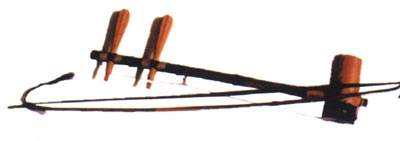The structure and material of Tibetan Jinghu
Tibetan Jinghu: Tibetan called "Binwang" and "Biwang". Tibetan stringed instruments. Tibetan Jinghu is mainly used to accompany songs, dances and Tibetan operas (called Duga in Tibetan). When Reba artists are performing, male artists play and dance. It is also the main instrument in Xianzi singing and dancing in the Kham area.

The Tibetan Jinghu is composed of the qin barrel, the qin rod, the peg, the qin hook, the qin horse, the qin string and the qin bow.
piano
It is made of a piece of bamboo, the length of the tube is 12 cm to 15 cm, the front of the tube is covered with snake skin or python skin, the diameter of the surface is 5.4 cm to 6 cm, the back end of the tube is open, and the upper and lower parts of the tube are open for loading the piano. Rod through hole.
piano bar
Bamboo, mostly made of purple bamboo, white bamboo or phoenix bamboo, thick at the top and thin at the bottom, usually with five sections, with a bamboo section at the top, the rod is 50 cm to 60 cm long, and the diameter of the middle section is 1.8 cm to 2 cm. On the two bamboo joints above, each is equipped with a peg, and the lower section (without the bamboo joints) is installed in the piano barrel and exposed slightly.
peg
Wooden, mostly made of rosewood, the shaft is 15 cm to 17 cm long, the top of the shaft is spherical, and the installation direction is parallel to the piano barrel.
jin hook
A small S-shaped hook made of lead wire is used to hook the strings in the front bend, and the back bend is tied to the middle of the third section of the piano bar with a thin wire string.
piano, strings
Bamboo or wood, in the shape of a bridge or hollow. Zhang has two strings. In the past, silk strings were mostly used, but now steel strings are mostly used.
bow
The thin bamboo is tied to the horse's tail, and the bow length is 72 cm to 74 cm.
 渝公网安备 50010702504639号
渝公网安备 50010702504639号